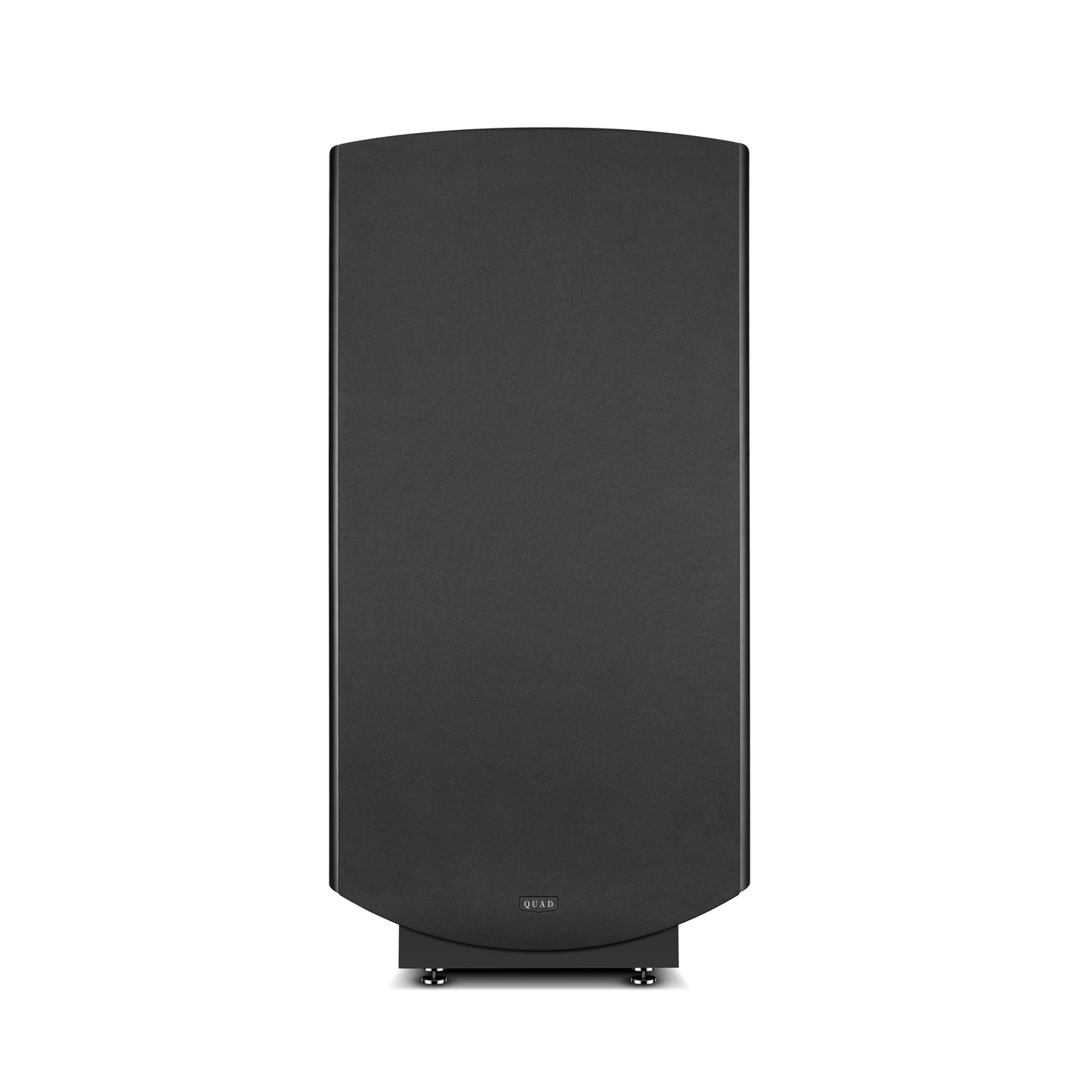
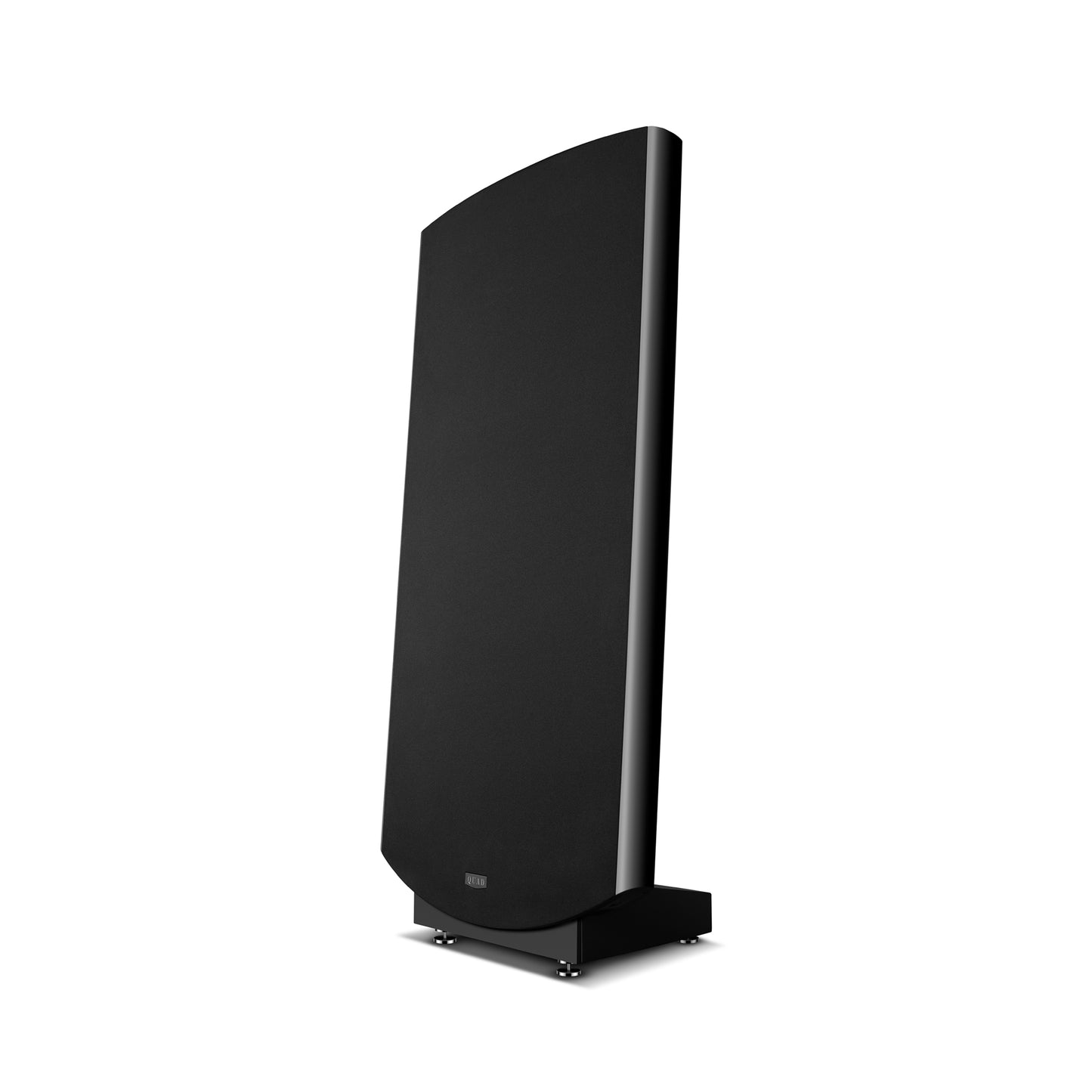
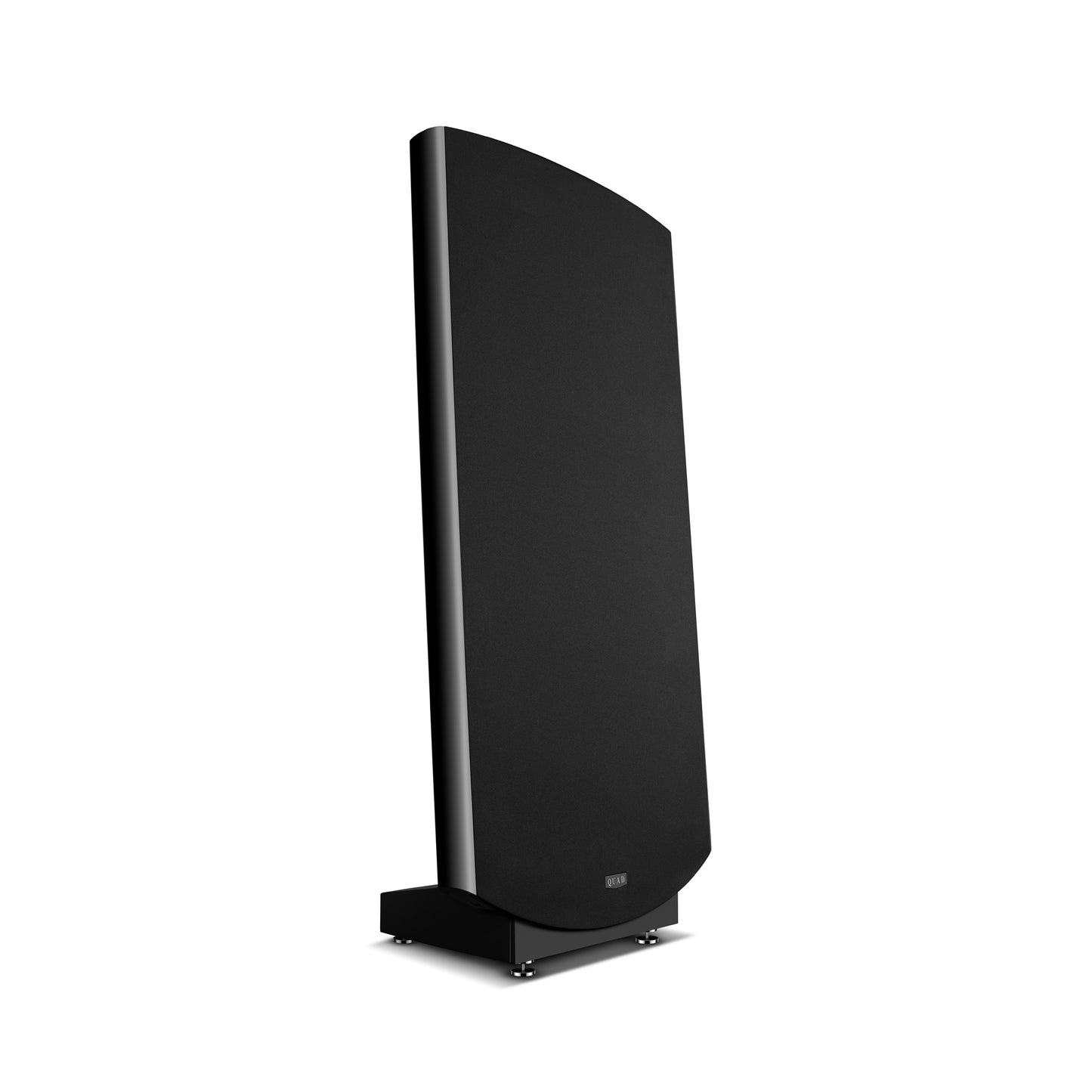
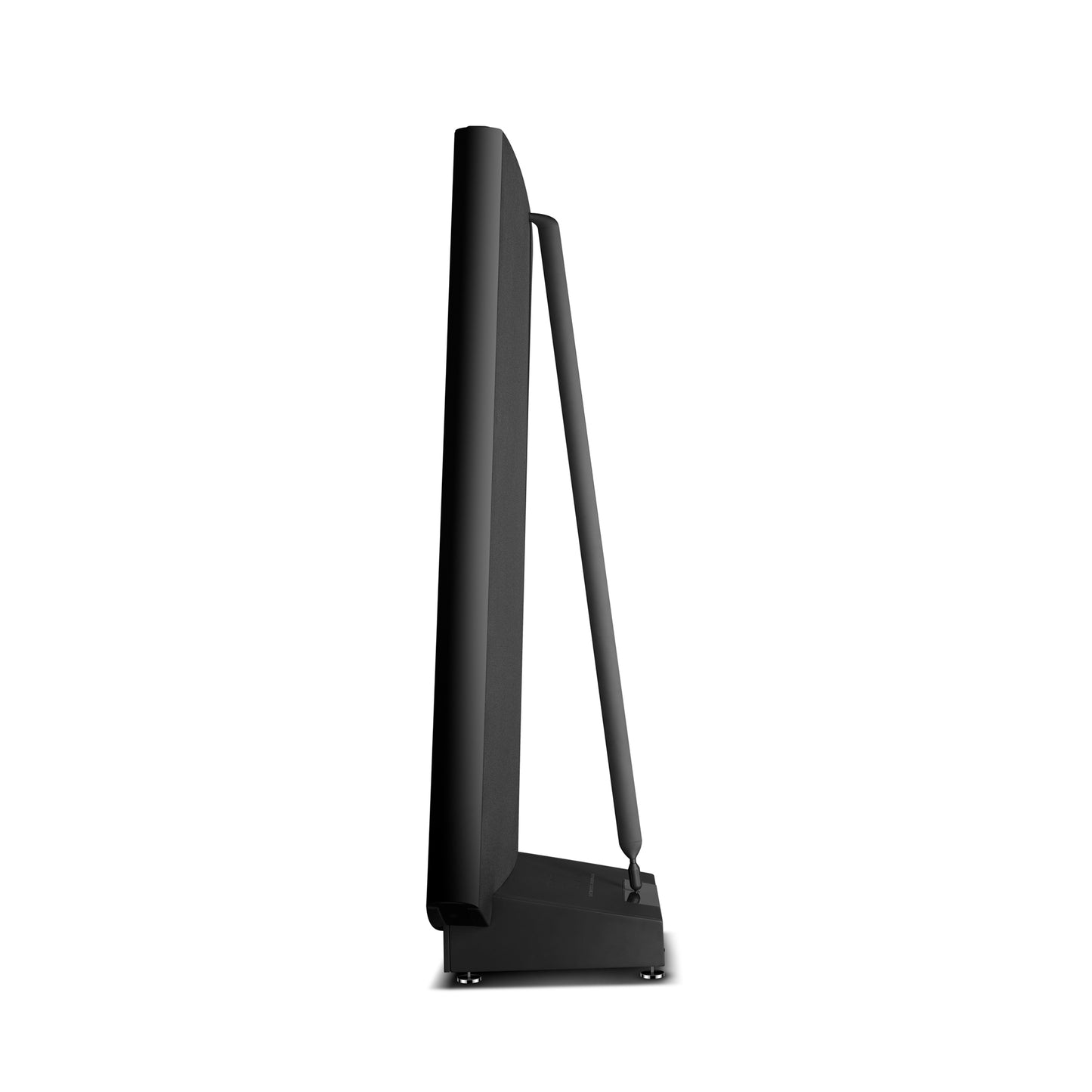
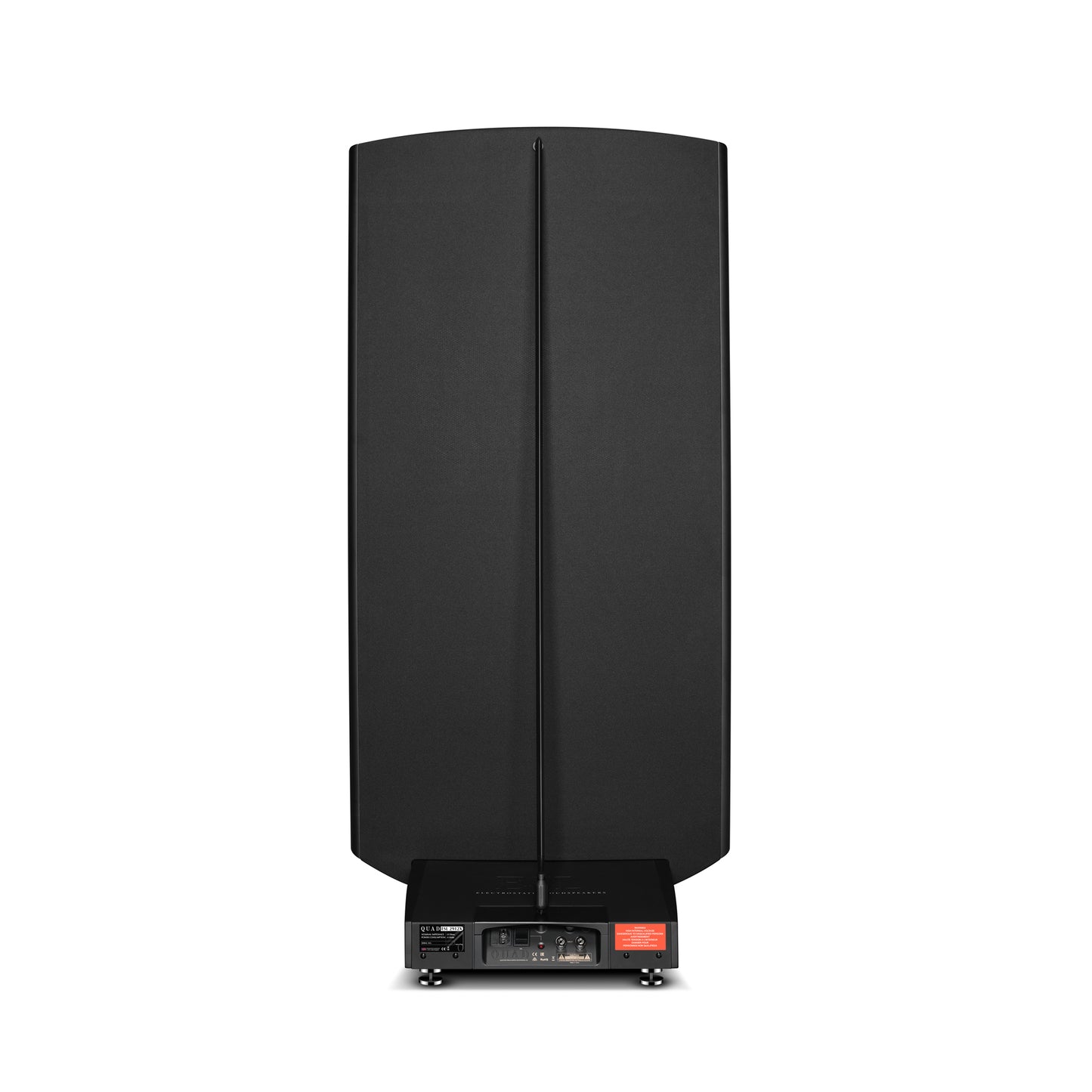
- Overview
- Specifications
- Downloads
- Reviews
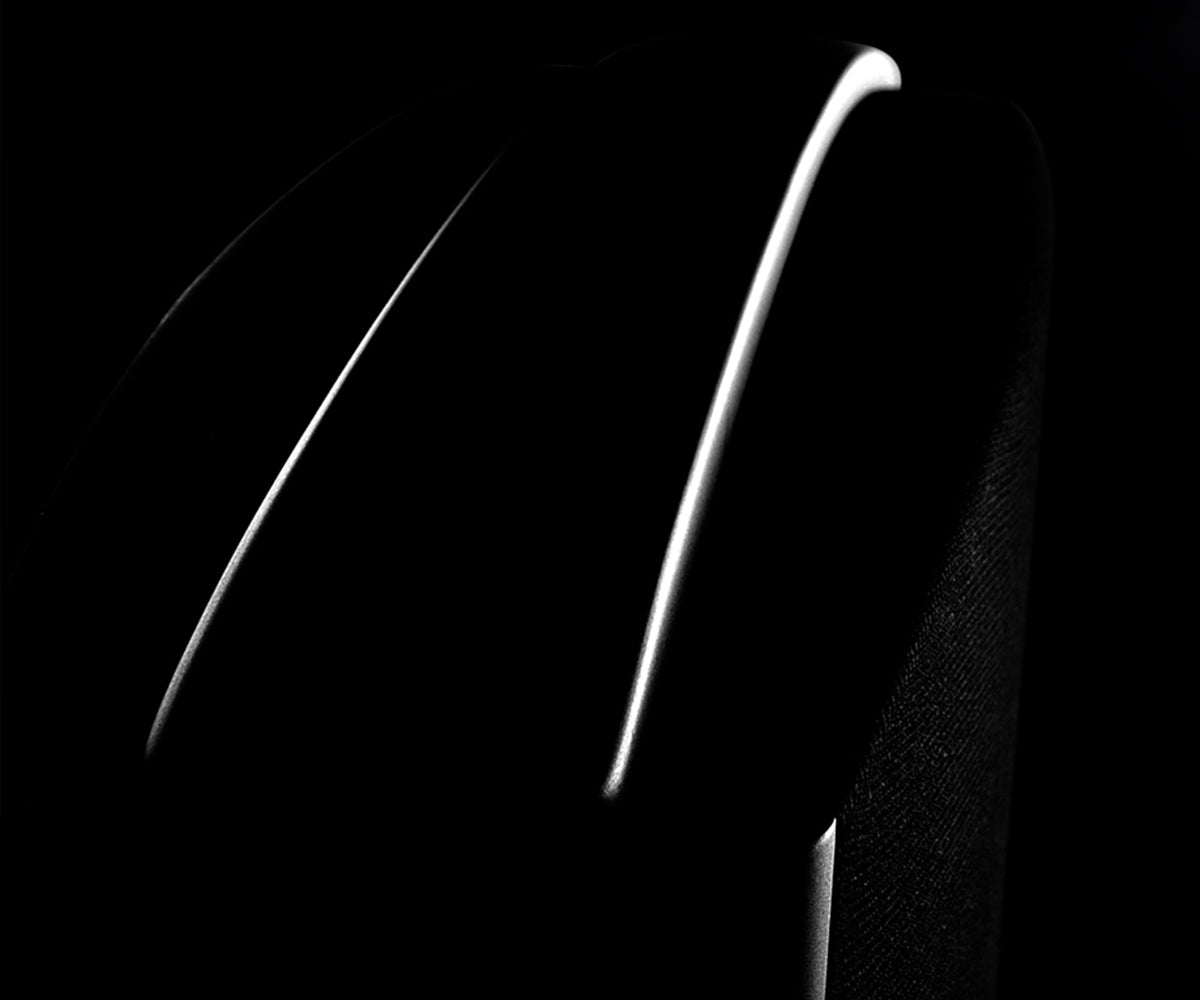
The Beginning
The ESL-X concept began in 2019 as part of an intensive review of the QUAD Electrostatic manufacturing facility—a suite dedicated solely to the production of QUAD ESL loudspeakers. Under the expert leadership of Paul McConville, (a gentleman recognised as the world’s foremost authority in QUAD ESL engineering, with 40 years of experience), every aspect of the original design underwent a comprehensive evaluation and meticulous refinement.
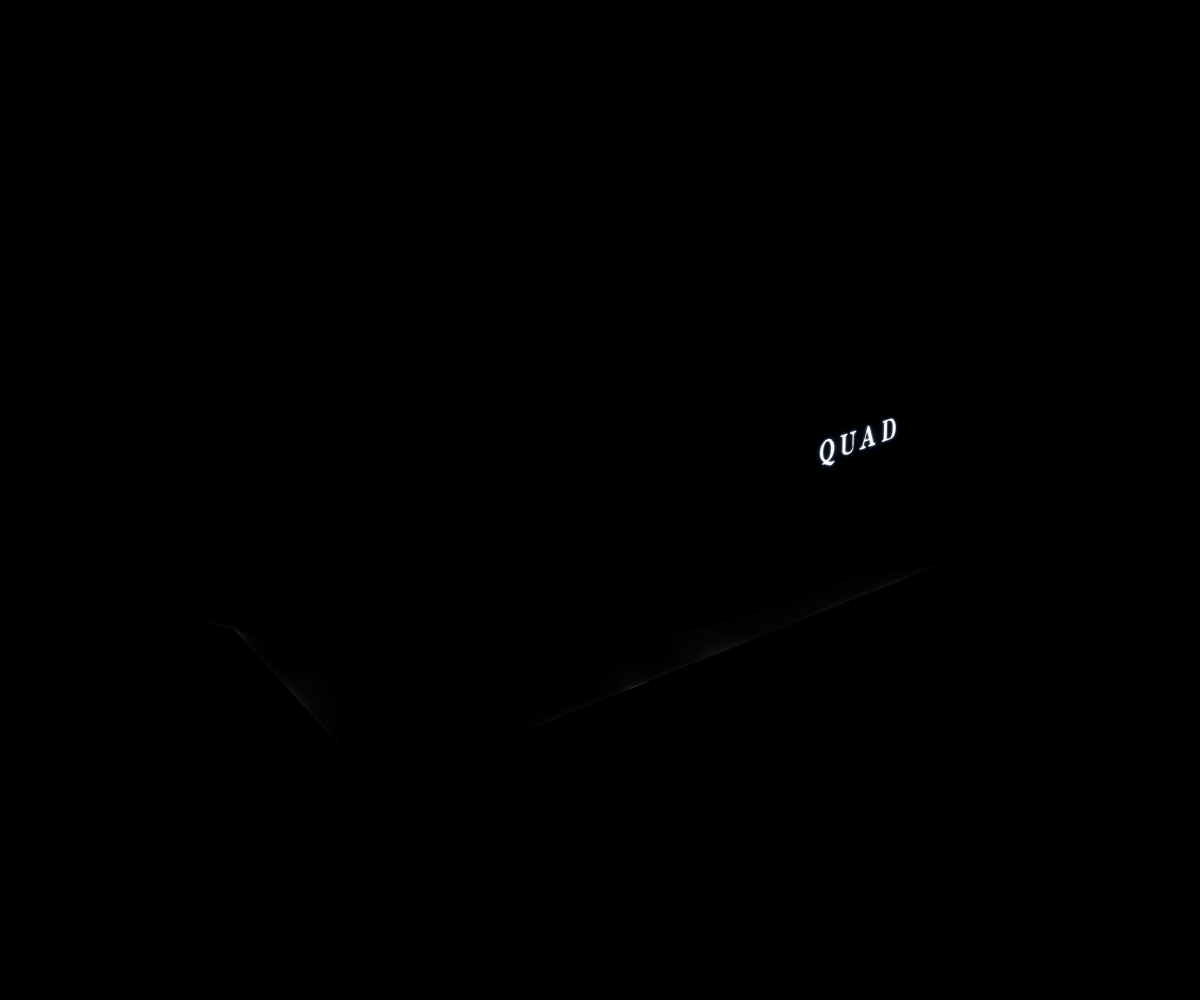
This approach encompassed a thorough analysis of every process, step, technique, material, tool, and jig employed in the construction of a QUAD ESL, with the aim of improving the quality and precision of the electrostatic loudspeaker assembly.
Leveraging techniques such as advanced laser-precision metrology, QUAD undertook an exhaustive review of the foundation of the ESL design. Systematic enhancements were implemented in the processes of spraying, etching, tensioning, and assembly to ensure peak performance. Rigorous upgrades were applied to implement both passive and active components, enhancing the overall system integrity of the then-current ESL 2912 and 2812 models.
The team of QUAD engineers considered the results of this lengthy and time-consuming self-appointed audit so significant that they deemed it worthy of a new model in the lineage of the ESL programme.
It is widely accepted that enhancing an ESL is fundamentally an exercise in building upon existing frameworks through incremental improvements rather than pursuing radical innovations. Consequently, QUAD did not require a complete overhaul of established methods. Nonetheless, these incremental advancements have now culminated in a significant transformation of the 2912 and 2812 models into what is now known as ESL X.
The History
In 1957, QUAD founder Peter Walker shattered conventions with the introduction of the first full-range electrostatic loudspeaker, achieving transient response and clarity then considered impossible.
Subsequent models (ESL-63, ESL988/989, ESL 2805/2905, ESL 2812/2912) each introduced incremental refinements. Critics have long hailed these models for their airy, effortless midrange and natural box-less hear-through qualities.
The Heart
One would be rightly forgiven for knowing of the ESL but not knowing how the ESL differs from typical loudspeakers. It us correct to begin with the fact that a QUAD ESL is not your typical loudspeaker! Unlike conventional speakers that use moving-coil drivers, the ESL employs a completely different principle: an electrostatic panel.
At the heart of a QUAD ESL are panels containing a diaphragm of fine Mylar film, ten times thinner than a human hair. The Mylar film is coated with a high resistance conductive material and suspended between two perforated metal plates called stators.

This unique diaphragm is incredibly light and therefore dynamically responsive. It is much lighter than any moving-coil driver cone and can therefore respond to signal transients with incredible speed and accuracy.
The Mylar diaphragm is charged up to a constant high voltage exceeding 5.2kV DC. An audio signal is applied across to the two stators to create an alternating electric field, which causes the charged electrostatic Mylar diaphragm to be alternativley pushed and pulled towards them. As a result, the diaphragm vibrates accurately in response to the music signal, and so produces the ultra-pure sound reproduction for which QUAD ESL loudspeakers are well-known.
Due to the diaphragm's lightweight nature and uniform drive across its entire surface, the sound it generates is exceptionally clean, responding accurately to musical transients, and exceptionally low in distortion, particularly intermodulation distortion. This is particularly evident in the midrange frequencies, where human hearing is most attuned.
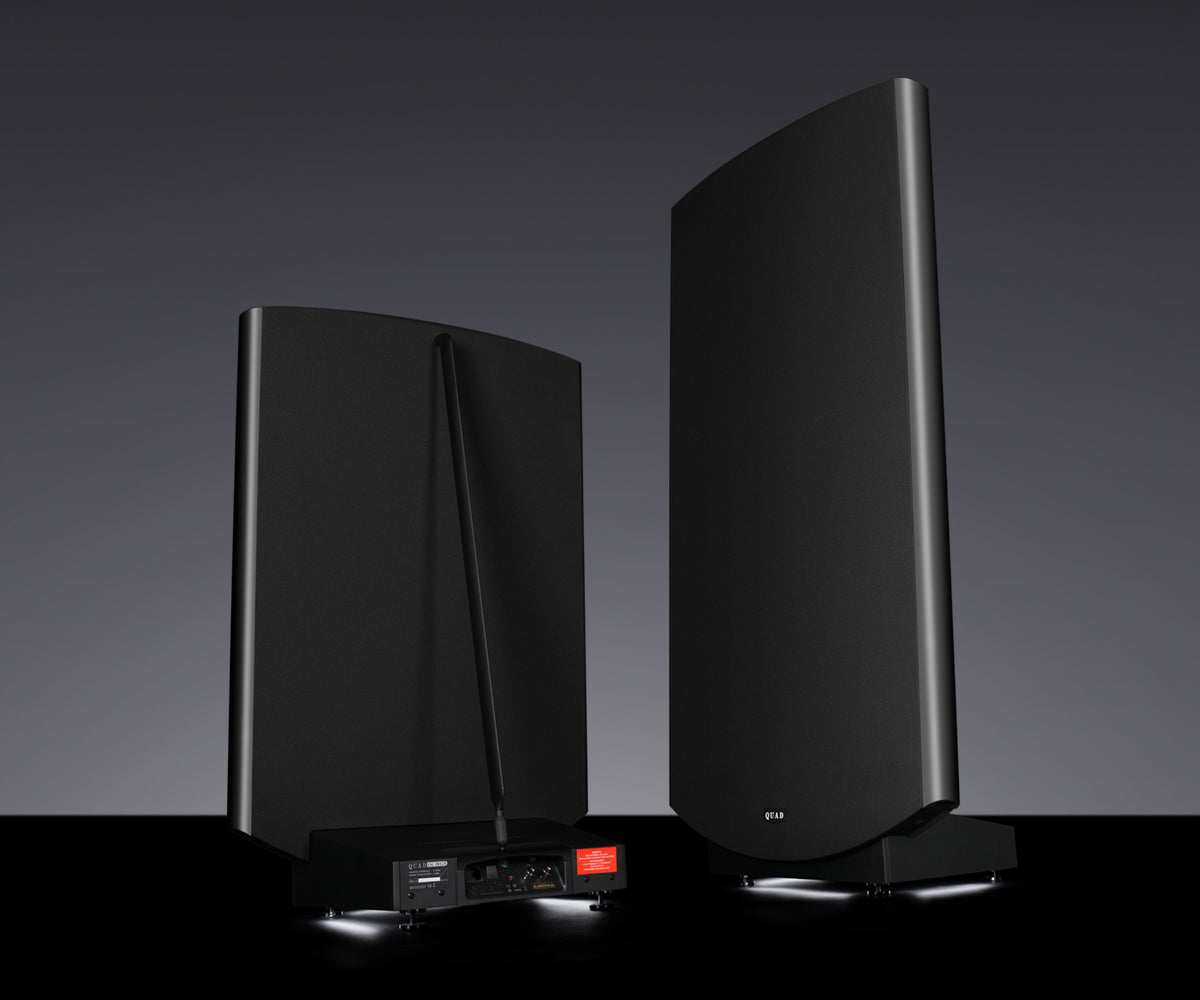
“Point Source” Design
QUAD's ESL mid-high frequency panels are configured with a "concentric ring” electrode design, initially conceived for the ground-breaking ESL-63. Rather than allowing all sections of the diaphragm to move uniformly, the speaker is meticulously engineered to ensure that the audio signal seems to emanate from a singular point in space. This sophisticated arrangement produces an exceptionally precise stereo image, wherein instruments and vocal performances appear to hover within the auditory environment — akin to being enveloped by the musicians themselves. This point-source characteristic is expertly facilitated by an innovative delay line system, which supplies the outer rings of the stators with gradually delayed iterations of the audio signal.
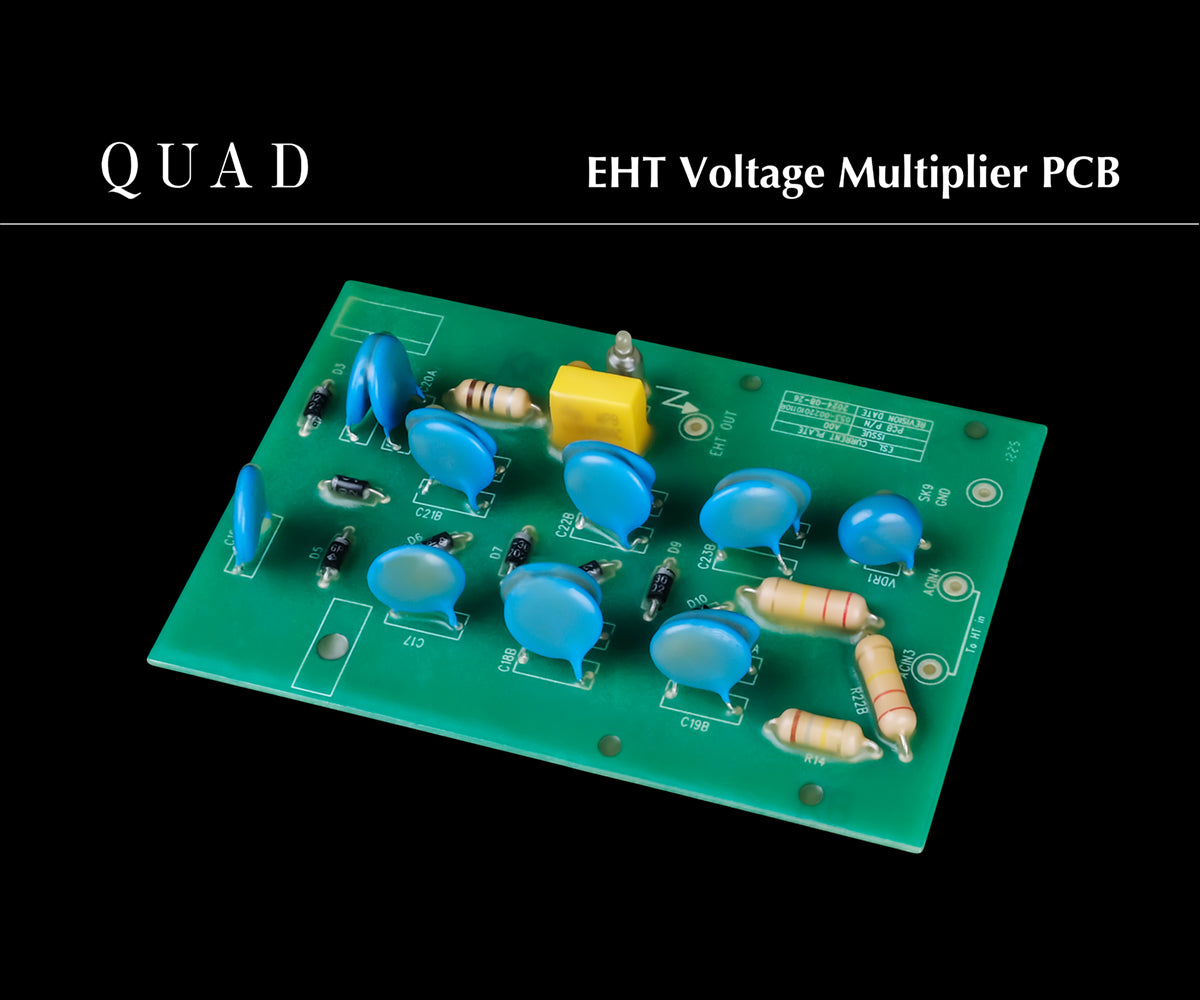
High Voltage & Low Distortion
One critical factor influencing the ESL’s performance is its notably high operating voltage – approximately 5,250 volts. This elevated voltage substantially enhances the diaphragm's control and linearity, allowing it to move with precision in response to musical signals while significantly reducing distortion.
A QUAD ESL rigorously regulates this high voltage via a multiplier circuit that amplifies standard AC power, complemented by a protective circuit designed to prevent overdriving (excessive input power), thereby safeguarding the speaker from potential damage and distortion.
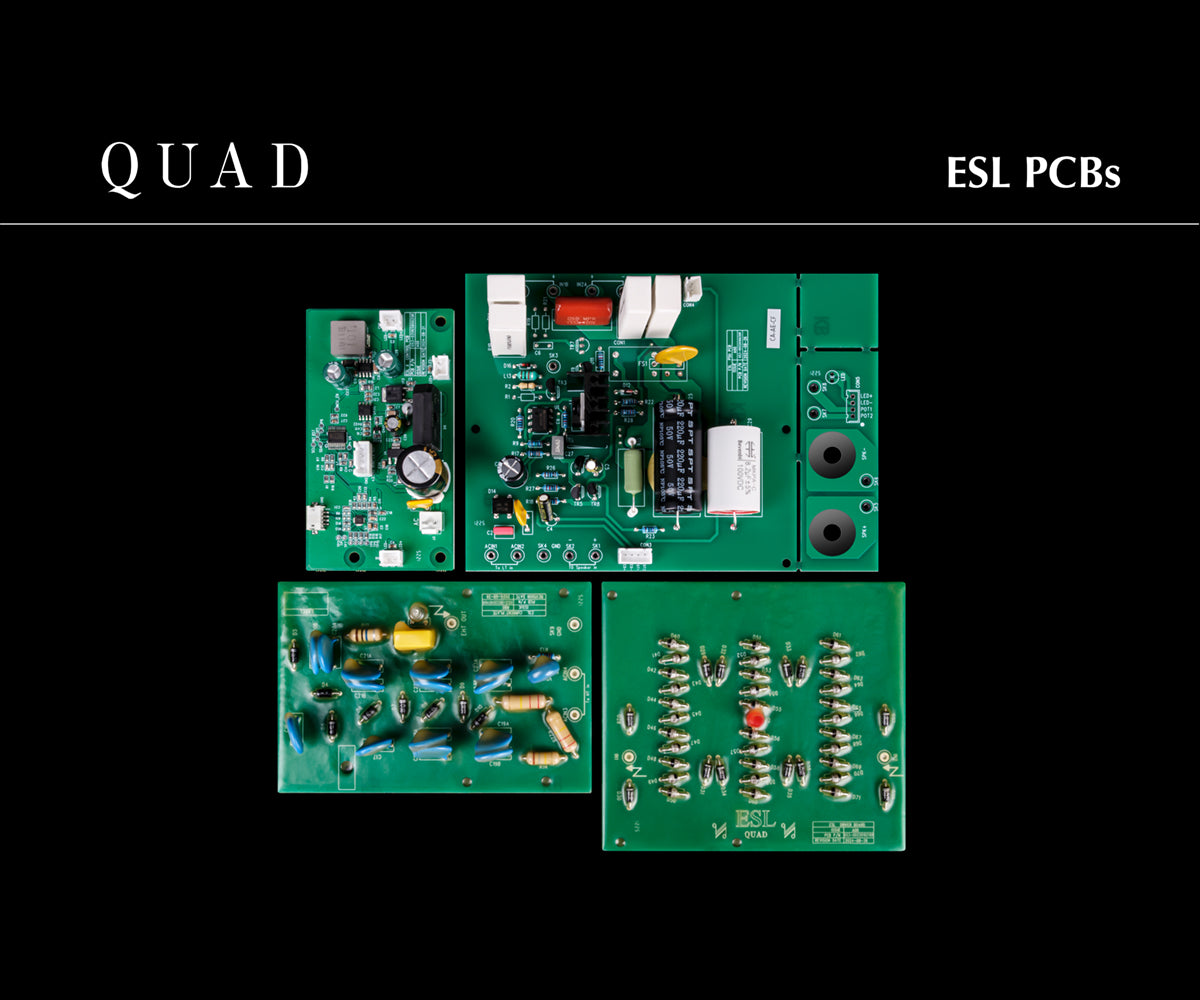
The Improvements
The intricate details of the manufacturing process contribute significantly to the refinements that are more than audible in the ESL X. For one, the time taken to manufacture a single QUAD ESL panel is extended, therefore the time frame for a full ESL loudspeaker system to be assembled is much more considered. The process is one of extreme care and attention to detail.
However, dig even deeper and QUAD engineers have taken things to the ‘X level’ with some intriguing further enhancements.
Major upgrades
The first technical improvement sees the operational PCB split from a monolithic design into three fully independent modules. The system comprises a High-Voltage Multiplier Module, a Control and Protection Module, and a Low-Voltage Signal Module. Together, these components form an integrated unit designed for optimal performance and reliability. By physically segregating the 5.25 kV multiplier stage from the sensitive low-voltage circuits, QUAD significantly diminish stray high-voltage electric fields. This isolation strategy not only minimises interference and crosstalk but also markedly enhances stability and noise performance. The resulting effect is crystal-clear audio signals that faithfully reveal every nuance, even during powerful musical peaks.
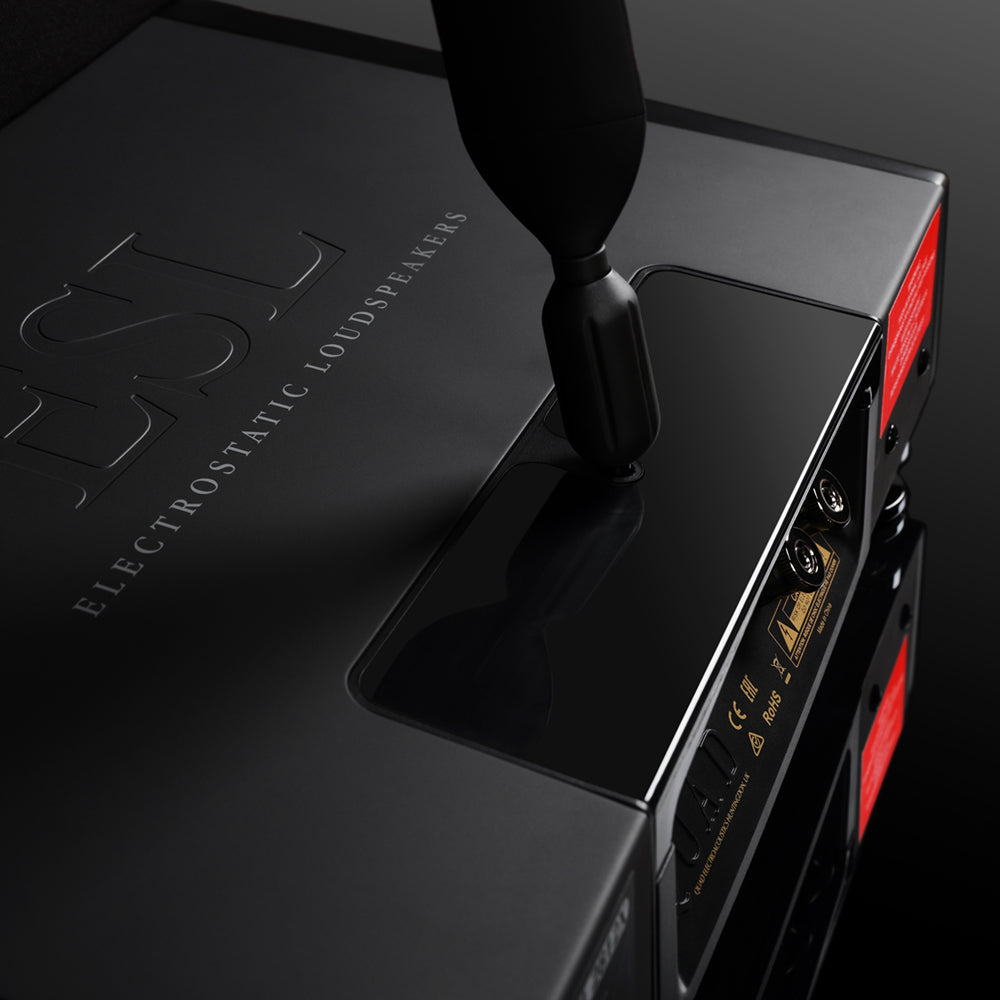
Secondly, it is important to note that, specifically for the ESL X, QUAD has reverted to using UK-manufactured audio transformers. These transformers are of a meticulous custom-specified designed, refined, and supervised in quality control by QUAD’s renowned service team, led by Rob Flain. The transformers are purpose-engineered to improve signal dynamics, particularly within the mid and high-frequency ranges. This results in a sound that is considerably more detailed, and exceptional high linearity is achieved. The wide bandwidth ensures a flat response extending to beyond 18 kHz, creating an effortless sense of airiness and extension. With robust regulation in place, these transformers effectively eliminate flux modulation artefacts when operating at high sound pressure levels.
Ultimately, these transformers significantly enhance mid-high dynamics, sharpen transient attacks, and broaden the perceived depth of the soundstage with superior resolution of micro-dynamics.

Peter Comeau, QUAD’s Director of Acoustic Design, has monitored the development of the ESL X closely and comments as follows:
Peter Comeau, QUAD’s Director of Acoustic Design, has monitored the development of the ESL X closely and comments as follows:
“The X suffix for the new QUAD ESL 2912 and 2812 speakers suggests something eXtra and that is certainly delivered in the sonic performance of these models.
First of all the inclusion of UK built audio transformers, built precisely to Peter Walker’s original specification, provides wider bandwidth, especially at the high frequency end where the extra extension offers superior clarity to instrumental harmonics as well as lending more air to the spatial acoustics.
Secondly, an all new PCB board layout splits the audio components from the high tension section and optimises the latter to provide a more stable 5kV supply to the electrostatic panels. This benefits both the precision of instrumental timbres and, not surprisingly, the transient attack, particularly in the bass region. Finally a new grille cloth, specially chosen to match the matt black finish of the speakers, offers improved acoustic transparency which helps realize the full benefits of the new internal components.
The result is yet another incremental advance of the musical performance of the QUAD ESL, still considered the most uncolored, natural and transparent-to-the-source hi-fi loudspeaker.”
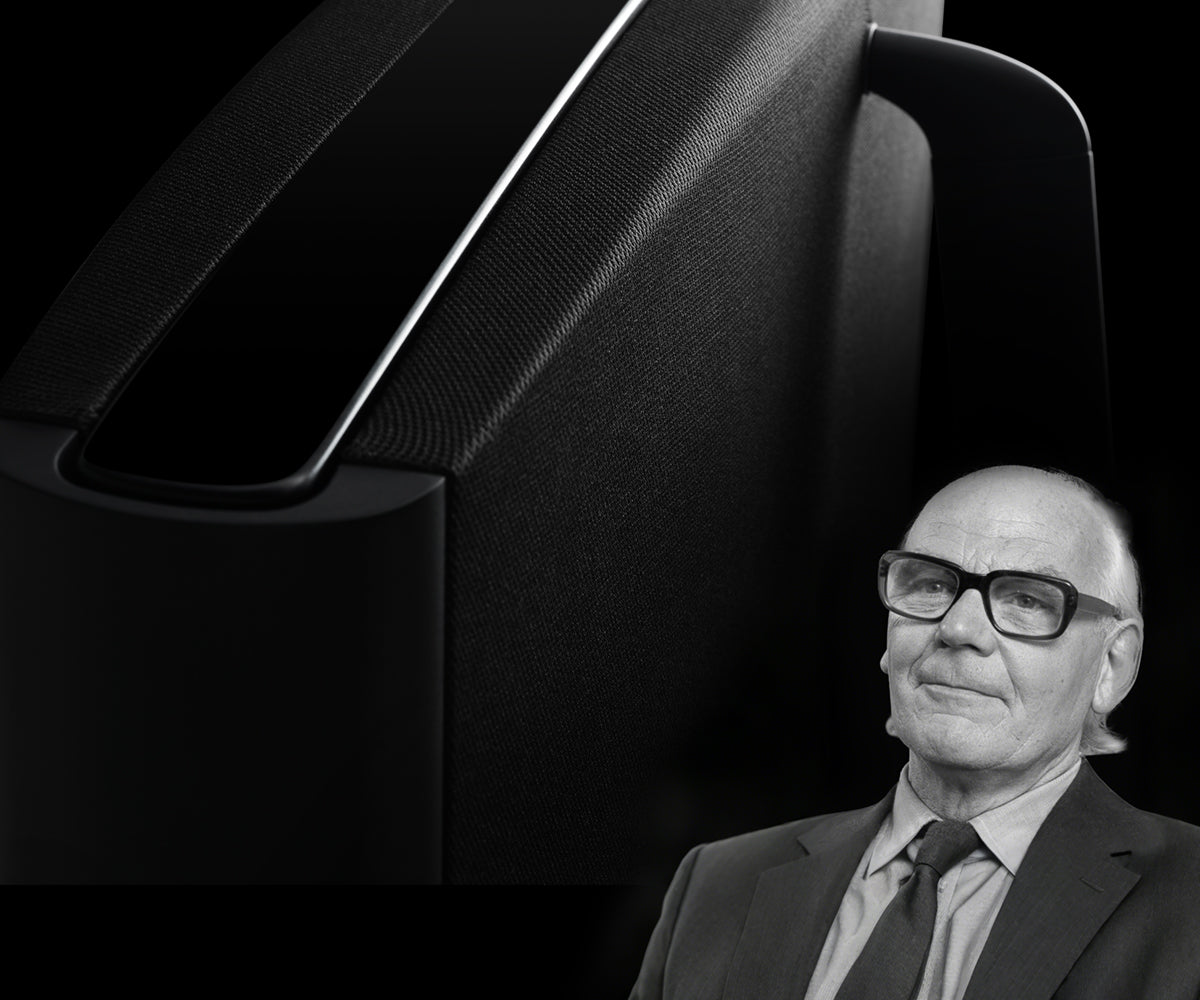
From the shadows
The QUAD product development team has deepened its understanding of the ESL concept significantly. Peter Walker’s ultimate goal was not merely to achieve technical novelty for its own sake; rather, he sought to ensure that listeners experienced music as it was intended — faithfully, honestly, and without the speaker imposing its character. He notably described the perfect audio system as one that would leave the listener uncertain whether the sound is live or reproduced. Thus, the loudspeaker should ‘disappear’.
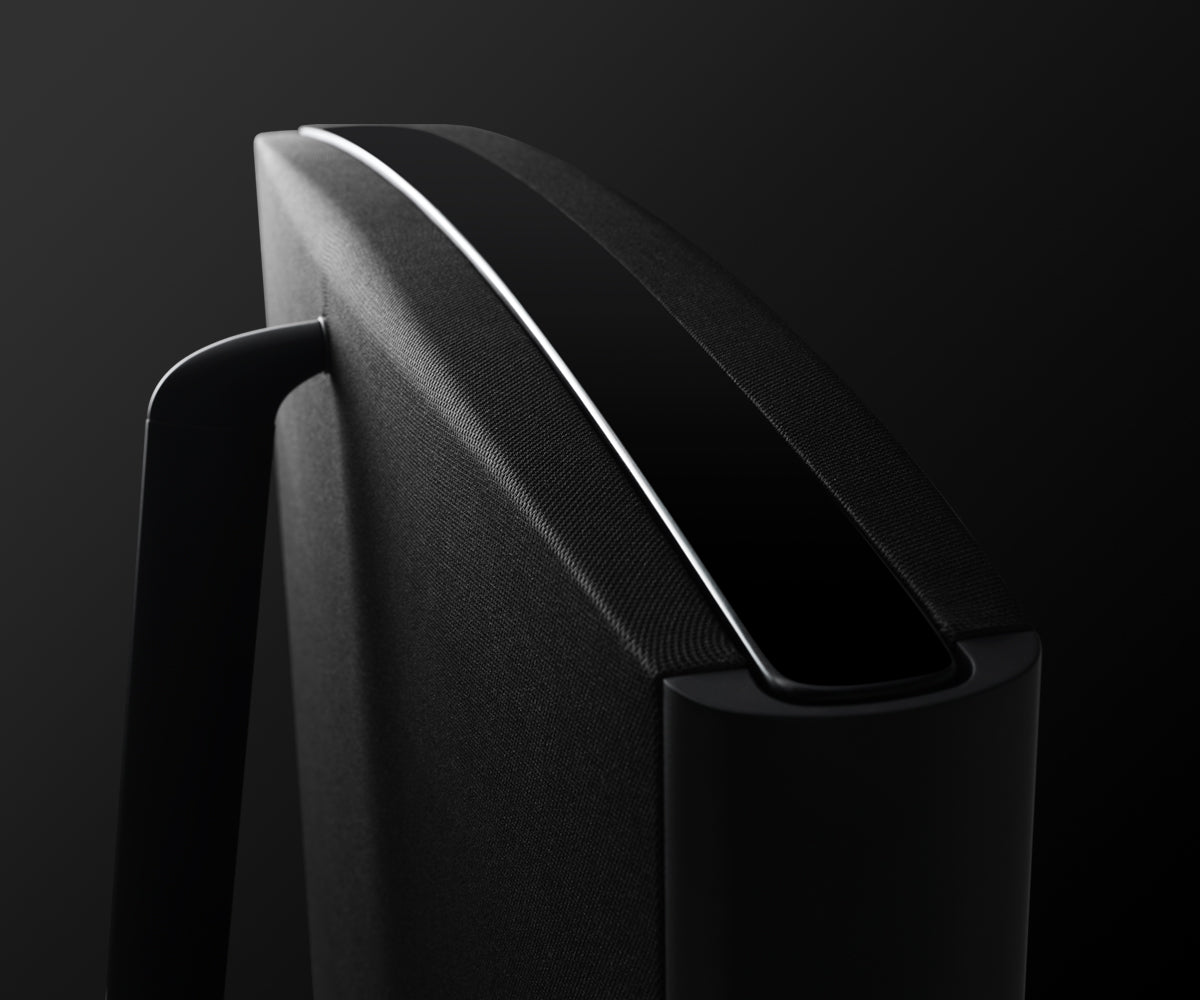
The newly customised paint finish of the ESL X aligns with this intent, featuring a low-reflection matt black exterior. The traditional wood trims have been eliminated to further modernise the design, allowing the ESL X to blend seamlessly into its surroundings, almost fading into a shadow in low-light conditions. The ESL X, therefore, can all but ‘disappear’ to leave nothing but the music.
This ’all-black-everything’ finish embraces Peter Walker’s philosophy of minimalism. It eschews gimmicks in favour of the belief that good engineering and elegant simplicity are the true pathways to high fidelity.
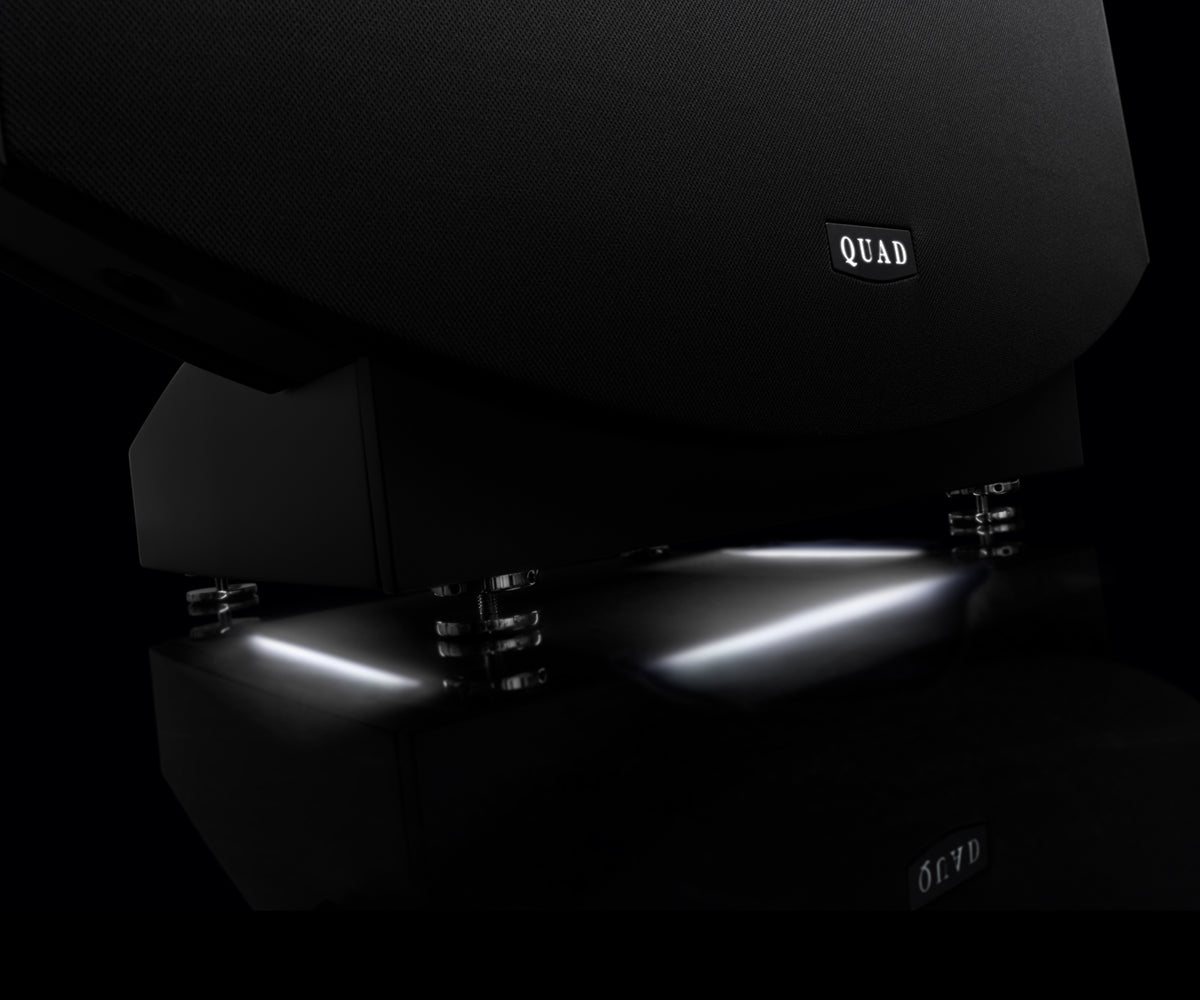
However, for those who believe in the beauty of the QUAD ESL's formidable stature, a subtle LED halo option now illuminates the speaker from beneath, adding a modern, elegant presence to the room.
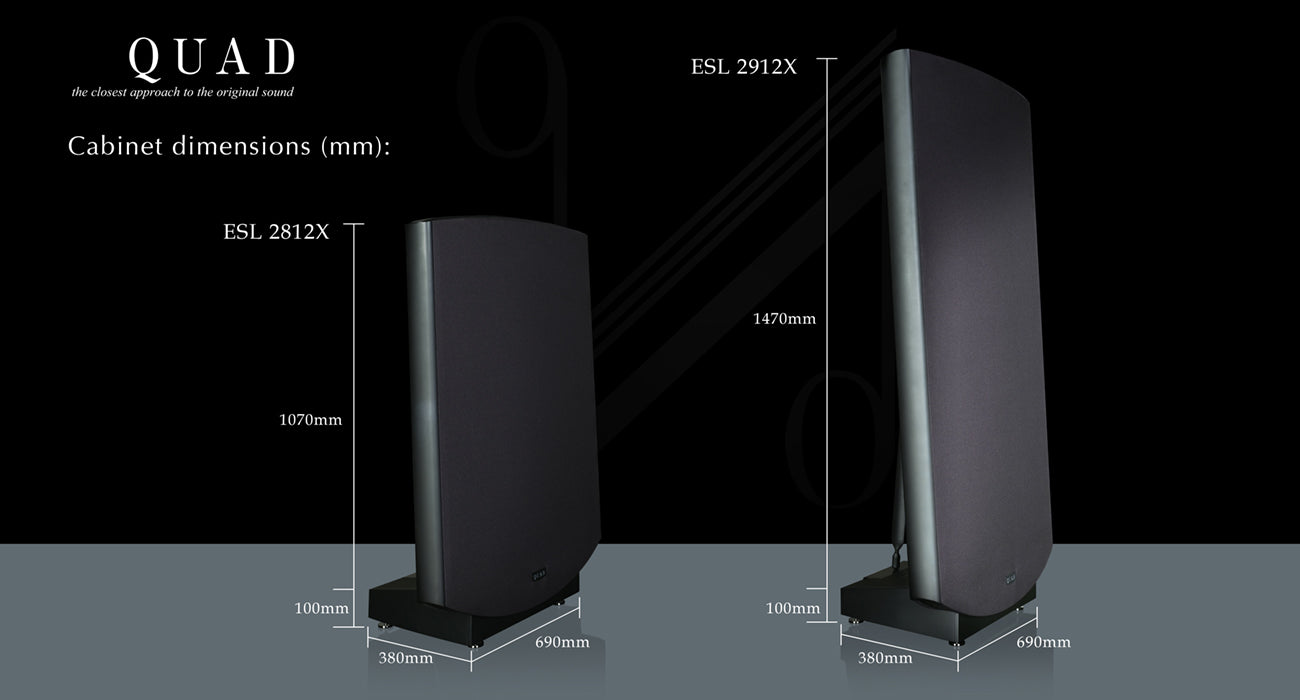
Specifications
| Model | ESL 2912X |
| Format | loor standing dipole with 3° fixed tilt |
| Type | Multiple electrostatic drive membranes |
| Point Source Time Delay | Progressive concentric rings |
| Chassis Structure | Heavy duty composite aluminium / steel |
| Panel Elements | 6 |
| Maximum Output | 2 N / m2 at 2m on axis |
| Sensitivity | 1.5 mbar per volt referred to 1m (86dB/2.83V rms equivalent) |
| Nominal Impedance | 8 Ohms |
| Impedance Variation | 4 - 20 Ohms |
| Maximum Input | Continuous input voltage (rms): 10V Programme Peak for undistorted output: 40V Permitted peak input: 55V |
| Frequency Response | 32Hz - 21kHz (-6dB) 28Hz - 23kHz (useable) |
| Directivity Index | See Polar Diagrams |
| Distortion (100dB @ 1m) | Above 1000Hz <0.15% Above 100Hz <0.5% Above 50Hz <1.0% |
| AC Input | 220 - 240V, 100-120V |
| Power Fuse | 100mA anti-surge, 200 - 240V 200mA anti-surge, 100 - 120V |
| Power Consumption | 8W |
| Dimensions (H x W x D) | 1470 x 690 x 380 (mm) |
| Net Weight | 44kg |


















